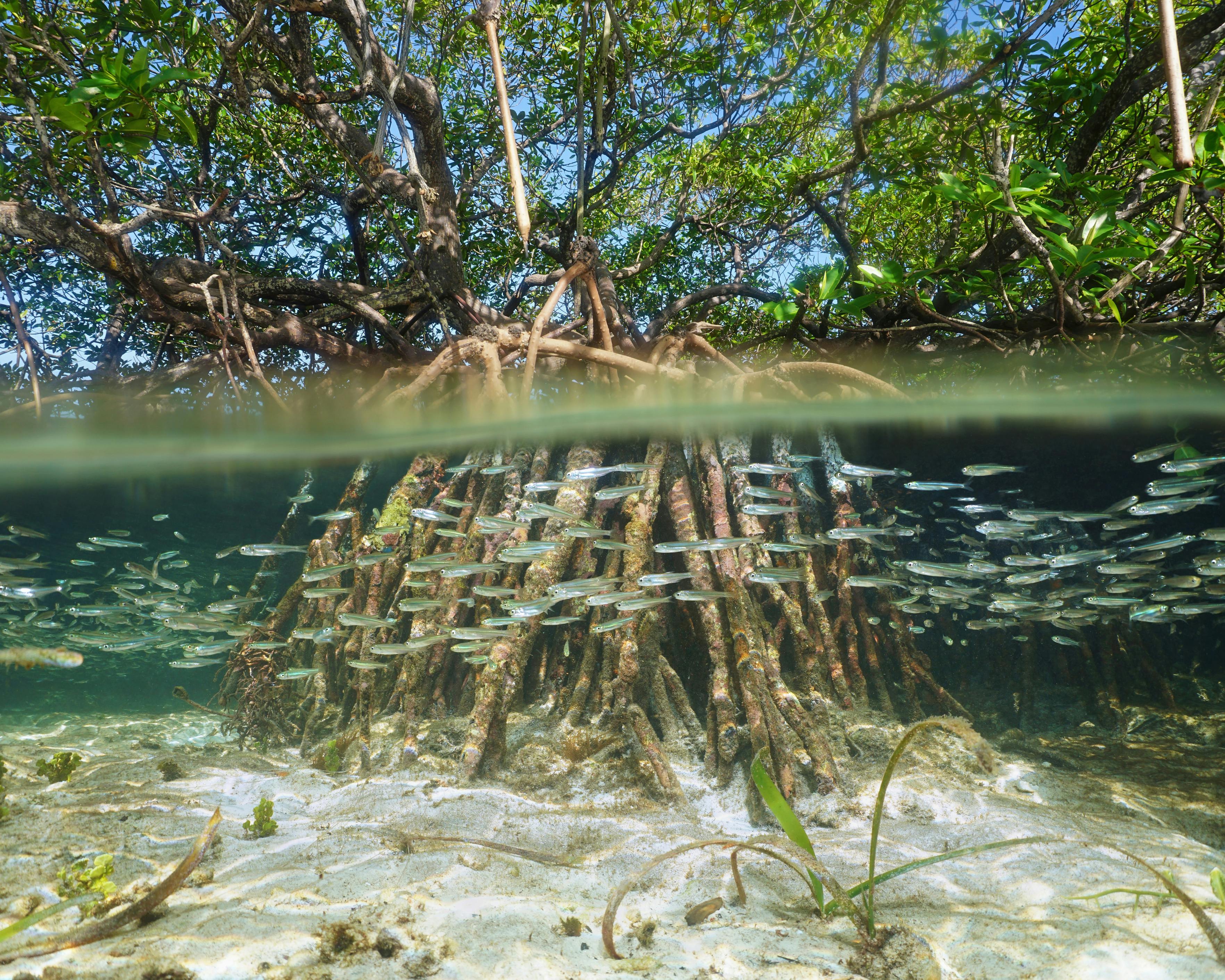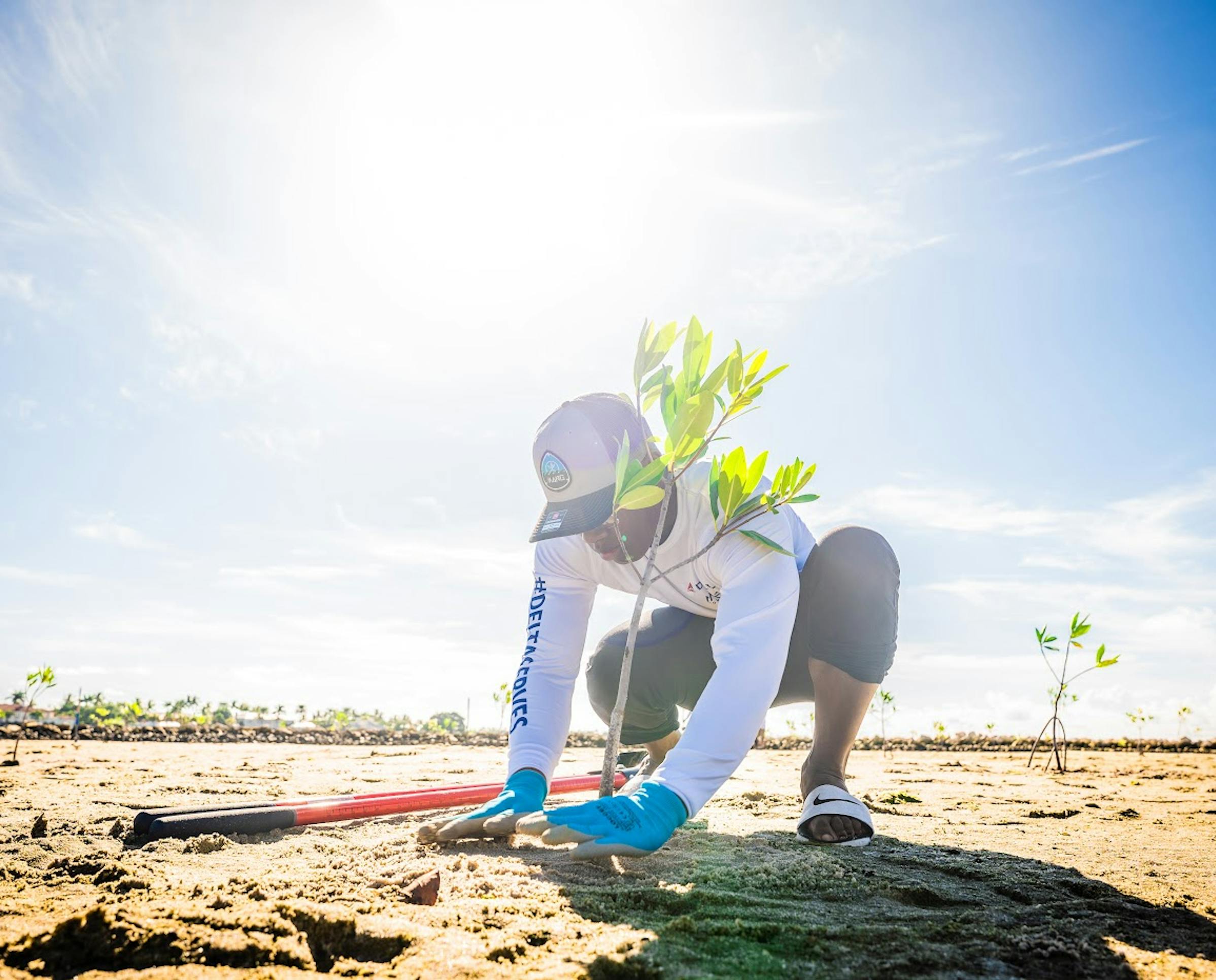Free Shipping on orders of $49+ | Signup for Direct Rewards
Free Shipping on orders of $49+ | Free Store Pickup | Signup for Direct Rewards
Free Shipping on orders of $49+ | Signup for Direct Rewards
Free Shipping on orders of $49+ | Free Store Pickup | Signup for Direct Rewards

Mangroves are essential to the earth’s delicate balance, so why are we not talking about them as much as other environmental issues? Oftentimes when we talk about environmentalism when it comes to the ocean, we highlight the beautiful animals that inhabit and explore it. And rightly so, for these animals are symbiotic to the ocean (and the planet’s) health and wellbeing. With that being said, plant life can tend to be left on the backburner of conservation efforts. Not only does the ocean’s flora provide food for the herbivores of the sea, but much of it also acts as protection and homes for smaller animals who can use it as such—like mangroves.
First of all, what are mangroves? A mangrove is a tropical plant resembling a tree or a shrub, and like shrubs, they grow in groups called mangrove forests. Mangroves favor the wet, loose soil along saltwater coastlines. They have long, winding and often interconnected branches and roots, and their leaves are mostly long and elliptical, coming to a point at the end. This can vary species to species, of course. While there are more than 50 different species of mangroves around the world, there are three main species we can find here in Florida. These are the Red mangrove, Black mangrove, and White mangrove.
Like we mentioned earlier, mangroves are essential to environmental balance. But how? What is it that they do that makes them so important? Well, it’s not just one thing they do, but many and for many different species—including humans. One of the most vital roles they play, though, is the habitat they create for smaller animals. This includes marine animals, who use their winding roots for protection against predators, and also many species of birds who use mangroves’ strong branches for nesting and protection as well. The strength of mangroves’ interconnectedness also provides a barrier against high winds and waves that can accompany strong storms. This being said, they prevent erosion and stabilize the coastline. Additionally, they are powerful warriors against climate change. A patch of mangroves has nearly ten times more carbon absorption power than that of a terrestrial forest of about the same size. According to scientists, the absorption of carbon is roughly 30% of the solution for remedying the climate crisis. That’s a pretty big deal!


Like much of the natural world out there, mangroves are currently threatened and disappearing all over the world. Between industrial development, climate change, and pollution from improper waste disposal and pesticides, the mangrove populations that line our coast have been declining at an alarming rate. While we may think that simply planting more is the quick solution, there is much more thought and strategy that goes into it. When the mangroves have been removed, the land they were protecting shifts, making it more challenging for the roots to take hold. Additionally, the right species of mangrove needs to be matched perfectly to the environment, otherwise it may not survive.
Those who work in mangrove restoration efforts do the challenging work to make sure the replanted mangroves can thrive in their new environment. We can help by volunteering for these organizations and spreading awareness for the importance of mangroves in the environment. Additionally, the removal of mangroves must end. While, here in Florida, you need a permit to trim or alter any mangroves, they are not wholly protected from removal. Keeping the current mangrove populations safe is essential, planting more is helpful, and spreading awareness is key to getting others on board to protect these vital plants.
Thankfully there are organizations committed to supporting the restoration of mangrove forests like MANG. MANG is a quality apparel company that runs on the promise of Buy One. Plant One.®. This means that every item you purchase not only helps to keep you cool and comfortable in the hot sun, but supports the restoration of these habitat-building plants. So, while we all work to keep our environmental efforts going strong, let’s remember to care for the plants that many of the animals we highlight use as homes, safety, and nutrients.
What is the purpose of mangroves?
Mangroves are used as homes and nurseries for many marine animals to stay safe from larger predators. They also act as a natural barrier against strong winds and waves from storms and, as powerful absorbers of CO2, they decrease the carbon footprint in the areas they inhabit.
Where can mangroves be found?
Mangroves cannot grow in cold climates, so they’re found in areas closer to the equator all around the world.
Are mangroves endangered?
According to the IUCN, about 16% of mangrove species are on the Red List, meaning they’re under threat of extinction due to coastal development, climate change, and other factors.
Can mangroves live in freshwater?
The short answer is yes, mangroves can grow in freshwater. They tend to stay more in saltwater areas due to less competition with other plants though.